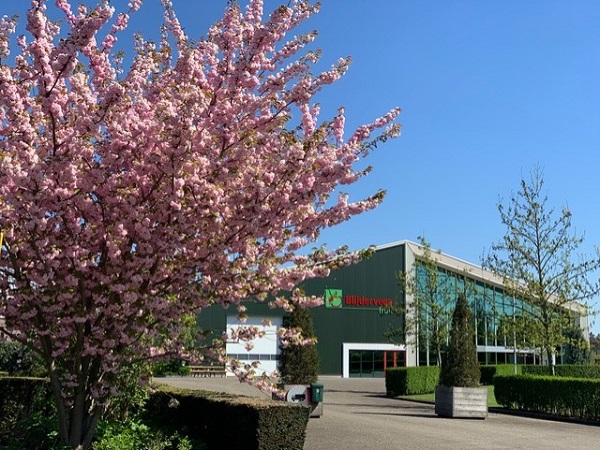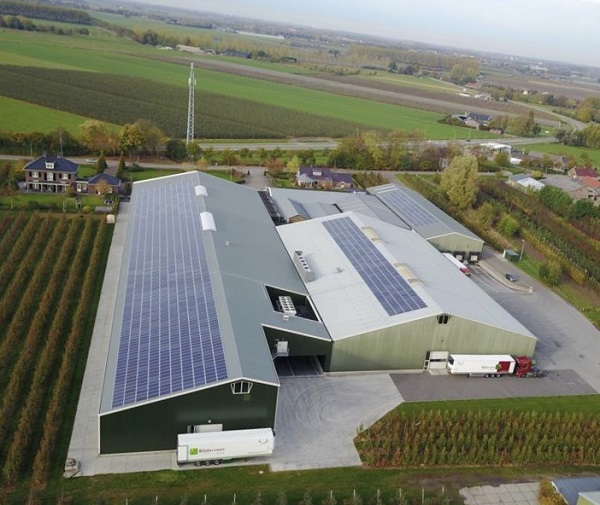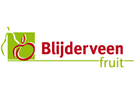The Dutch top fruit season is at its end. It was characterized by fewer apples and more pears than expected. Trader and fruit grower Kees van Blijderveen of Gebroeders van Blijderveen reflects on the season. And he looks at what lies ahead for the sector.
“Looking back on the apple season, we harvested noticeably fewer apples than usual. It’ll be challenging for many parties to connect with the new season. Supermarkets like Aldi, Lidl, and Albert Heijn stopped with Elstar in around mid-June. So wholesalers can continue a little longer. We certainly can’t complain about the apple season. It was good, and we’ll close with decent prices,” says Kees.
“Pears, on the other hand, were a somewhat different story than we initially expected. The first reports suggested a smaller harvest. But during harvesting, these figures had to be adjusted upwards. After that, the entire season was a struggle with unreliable stock estimates. That’s something we need to look at more closely. Towards the end of the season, the market picked up slightly, and the situation improved. Nevertheless, the season was somewhat disappointing.”

Club varieties
Gebroeders van Blijderveen cultivates only traditional apple and pear varieties. “With apples, we focus mainly on Elstar and with pears on Conference. One of the reasons we don’t have any club varieties is that they’re harvested relatively late. That causes long intervals, which makes it increasingly difficult to get the fruit off the trees. That’s in terms of labor availability. Another factor is that we don’t know which club variety will prosper,” Kees continues.
“In recent years, many new concept and club varieties have been introduced on the market. One is well-received by some people, others prefer another type. We haven’t yet decided which breed is the best and which one we should choose. However, we don’t exclude the possibility of growing and trading club varieties in the future. Our company’s set up to offer quality Elstar and Conference. Those varieties remain our top priority for now.”
Conference
The Dutch bank, Rabobank, recently published a report. It concludes that Conference pears have little potential for growth. Van Blijderveen agrees that this pear has reached its limit. “There are, unfortunately, few European regions left to conquer. We can sell more when, say, the Italian Abate Fetel harvest fails. But that’s random; you can’t build on that,” he says.

“I do think there’s still a lot of potential for the Conference outside Europe. This pear’s shelf life is its biggest disadvantage. In China, for instance, they like how the Conference tastes. But not so much how it looks. There, people prefer green, smooth-skinned pears. The Dutch weather is too erratic, and resources too limited to achieve that quality. I think shelf life is the biggest challenge for export to distant destinations.”
“No, there’s no such thing”
That word: no. Gebroeders van Blijderveen doesn’t believe in it. “We try to fulfill our customers’ needs in every possible way. We have our own production, transport, and short communication lines. These allow us to also work efficiently. We place great emphasis on service and quality, too,” Kees says.
“Importing fruit isn’t our specialty. But if that’s what the client wants, that’s what we provide. ‘No’ doesn’t exist. However, we primarily promote Dutch products. Large volumes of overseas imported top fruit aren’t necessary to provide consumers with apples or pears. But if people require a particular variety, retailers and greengrocers will meet that demand.”

The future
“We’ve had a few good seasons, and the whole fruit sector is slightly more optimistic than a few years ago. Despite this, I’m still concerned about the future of Dutch fruit cultivation. It’s hard work, with large investments and little revenue. That’s perhaps inherent to the agricultural sector. Succession is also uncertain for many companies. Nevertheless, we can certainly be extremely proud of our conventional hard fruit sector. This sector doesn’t show enough how well it’s doing,” Kees admits.
“We deliver quality, and in terms of sustainability, we lead the way. There are few opportunities to increase production per hectare in this sector. And the costs are high. I think not everyone understands that. We don’t, for example, grow tomatoes where the average yield per square meter has increased enormously in recent years. That also costs a lot of money, but average yields do grow. Yet, over 30 years, we’ve gotten, at most, 50 tons of Conference pears per year. That’s the big difference.”

“Still, there’s always hope. We must all make the best of it and continue to enjoy our work. The sector grows beautiful, delicious apples and pears. These contain important nutrients, especially in this COVID-19 year. We can look back once in a while to see where we stand. And we should certainly not forget to be proud of our sector. After every season, we can start harvesting again in August/September. So let’s start the new season in high spirits,” Kees concludes.
Kees van Blijderveen Gebr. van Blijderveen
Gebr. van Blijderveen
De Brei 9
4031 JE Ingen
Tel: 0344-601224
kees@blijderveenfruit.nl
www.blijderveenfruit.nl


